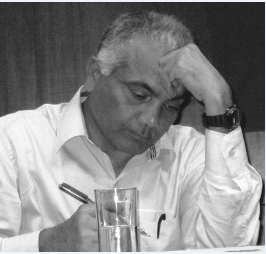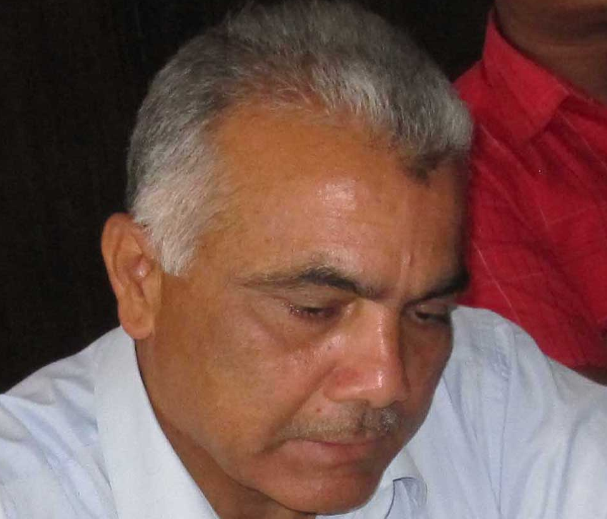Dev Raj Dahal, Kathmandu, Nepal
Introduction:
The sustainability of peace largely rests on its ownership by all the stakeholders and its ability to yield benefit to all actors of society—powerful, potential and left out.
The Nepali peace process, however, has links to power-sharing, DDR of all non-state armed groups, ideological fulfillment, and resolution of constitutional issues, social justice and identity-satisfaction.
A peace polity grows with a coalition of peace promoters having reflective minds to understand the underlying causes of conflict and the changing narratives of context, discourse, actors, issues and adversarial rules of political game.
Peace without adaptation to new conditions and satisfaction of livelihoods of ordinary people is simply unsustainable.
This means experts and actors have to understand the “systemic” factors of conflict and creatively design multiple tracks of change for their resolution.
In Nepal, the most difficult part of conflict resolution is a lack of rational approach. Nepal’s conflict is non-linear but actors often adopt linear partisan, class, ethnic, region, caste or gender perception of conflict rather than integrating all into a broader systemic framework.
There is also disciplinary bias of conflict experts as they are governed by what Herbert Simon calls “bounded rationality” devoid of national and systemic approach.
The instrumental approach to aid along the empirical division of the nation also brings global sources of conflict in Nepali society.
These are the negative ways of dealing conflicts as they forbid actors to diagnose systemically and use just prescription to abolish structural injustice.
A post-conflict recovery requires its politics move beyond binary code of friend and foe, political collusion for power-sharing and procrastination of transitional justice to common approach on crucial issues faced by people at multi-level governance.
The nature of Nepali politics rooted into an instinct for domination, power equation and power-sharing among powerful actors is incompatible with a social contract as a basis of rule-governed order, justice and peace.
Managing Conflict Energy:

Each conflict generates energy of its own kind and, if not managed properly, opens new centrifugal conflicts drifting into multiple directions.
Nepali policy makers have to understand first, the new sources of conflict dynamics propelled by changing power shifts of political parties and distributional groups who are motivated by completely new incentives generated by class war of CPN (Maoist) though it ended in Comprehensive Peace Agreement (CPA) in 2006.
The Post-CPA movements of subsidiary identities and their pacts with the government to resolve sub-national conflicts are still not a part of CPA though some of them are incorporated into the Constitution of Nepal.
Similarly, commissions on truth and reconciliation and disappeared persons, relief, rehabilitation and peace building measures and institutions are yet to synergize their approach to transitional justice and stable peace outcome.
Secondly, policy makers have to distinguish the legitimate and illegitimate goals and means (legitimate ones are human needs, human rights and international standards) of actors of conflict.
Nepali state can accommodate legitimate needs, not all illegitimate demands including monopoly on power of a party or group as such monopoly destroys the democratic polity and opens opportunity for the spoilers of peace, free riders and consultants who thrive on peace industries.
Sustainable peace building requires optimization of the interest, identity and ideology of all stakeholders in the system, not the maximization of one component of powerful actors leaving others ready to agitate.
The Constitution has incorporated many social rights of people but the state lacks sufficient capacity to realize them.
This marks the discrepancy between the rule of law and politics.
Non-implementation of rights, abuse of rights through impunity and use of violence to achieve political ends which are frequently communicated by the media in Nepal has created a vicious cycle of political and constitutional instability with deleterious effects on Track III actors.
Third, to make the peace process inclusive even for the excluded and hidden ones, civic participation becomes essential at multi-level governance and at social, gender and intergenerational levels.
For democratic stability, a balance must be struck between level of participation and capacity of civic institutions to absorb them. Extra-constitutional engagement evokes fear, not hope, to cut political transition.
The lingering political transition and instability of governments have strained Nepal to move to post-conflict phase due to ongoing conflicts at various levels—geopolitical, structural, perceptual, manifest and latent.
Peace experts’ and local conflict mediation committees’ major responsibilities are—knowledge building on peace, peace research and teaching, peace communication and peaceful collective action.
This, however, requires transforming the bi-nary code of dialectical and market materialism espousing “economy of violence,” into a peaceful economy so that people feel there is more benefit in production, exchange and participation of people than predation, extortion and corruption of self-interest.
But without the “state’s legitimate monopoly on power,” it would be hard to abolish the state of nature and create an economy of peace.
The economics of peace prevents the increasing commodification of life, education, health, nature and culture in Nepal and enlarges the capacity of the public sphere for a genuine democratic rule.
For democratic peace to prevail, a just condition of governance must be set up to improve state-society relations legitimized through the performance of public institution, public opinion, electoral legitimacy and democratic accountability affirming the sovereignty of people entrenched in the Constitution of Nepal.
In war, quake and pandemic-torn Nepali society local, home-grown, indigenous and modern approaches can also help the mitigation of conflict, enable the victims to deal with the past and generate hope for a shared future.
Building Peace from Below:
Democratic peace can be built from below at Track III of life-world.
Use of enlightened reasons is the core component for compromise of interest, ideology and identity and establishment of self-governance.
Empathy for the party in conflict, creative thinking and rebuilding broken relationships are important for conflict resolution.
Local Peace Committees once established in the beginning of peace accord and now abolished had suffered from operational programs and patronage politics.
The mandate of the local mediation committee to settle only local disputes, mediation and compromise, has to be combined with building joint local development projects which create a situation of win-win.
Still, at villages there are CBOs, NGOs, community organizations, and institutions of youth, civil society, and women’s initiatives that are helping to heal the wounds of political, communal and ethnic conflicts and restore the normalcy of social life through a modicum of measures for relief, reconciliation and transitional justice.
Spiritual discourses have more capacity than social scientific training and seminars to evoke emotional intelligence, healing effects and the feeling of people to donate for charity and development works and build social capital for local level cooperation and reconciliation.
They also generate hope necessary for social and ecological resilience but not enough to achieve sustainable peace.
It requires cohesive strategic action. Intoxicated by power, Track I macro actors’ ability to unify diverse perspectives into a common ground and national perspective is time-consuming.
The inner contradiction within parties has emasculated the necessary political will of leaders to act in the interest of the public and settle several issues and beef up stable governance. The micro-macro conflicts are interlinked with each other and also with the larger geopolitical environment.
The Track II value-based processes are more dependent on Track I as actors of this track are largely partisan, sectoral, and geography-bound than creatively engaging to discover “common ground” for conflict resolution. Deadlock at Track I level is a general feature of Nepali politics.
It has made Nepal’s peace process muddle around due to lack of national consensus which is needed for the settlement of all constitutional issues linked to the peace process and to overcome development gaps.
The CPA suffered from non-monitoring of its goals and means, extra-constitutional mode of negotiation bypassing legislature and contradictory understanding of various actors about it.
Still, it helped to maintain “relative peace.”
\The principle cause of deadlock is attributed to psychological gaps: old parties are perceived as having interest only on the compromise in favor of status quo while and the new parties’ self-perception is revolutionary as they are bent on “state and society restructuring” without reading the global perception of the “fragility of Nepali state.”
The incumbent coalition government precisely claims this, though each actor asserts that it can muster national consensus but, ironically, each failed to inspire opposition’s support for sustainable peace, progress and constitutional stability.
Conclusion:
A just peace is linked to the path of enlightenment as it helps the creation of democratic institutions and constitution for the protection and promotion of human rights.
Abuse of human rights and maintenance of poverty are both causes and consequences of conflict. Actors and conflict experts should think outside their disciplinary, institutional, ideological and partisan bounds to capture national horizon.
The peace communicators have to share contextual knowledge and create a series of cross-cutting circles of peace and reconciliation responding to the livelihood crisis of people and beef up the stress-tolerance capacity of the state.
Circles should not be based on hierarchy, but on equality, and can create democratic culture of collective envisioning, common strategies and cooperative action for sharing common goods.
Coordination, communication, steering and collective action at various tracks can generate a virtuous circle of peace and transform Nepal’s current culture of violence to sustainable peace embedded in the “golden mean” defined by the apostle of peace Gautam Buddha.
End text.

